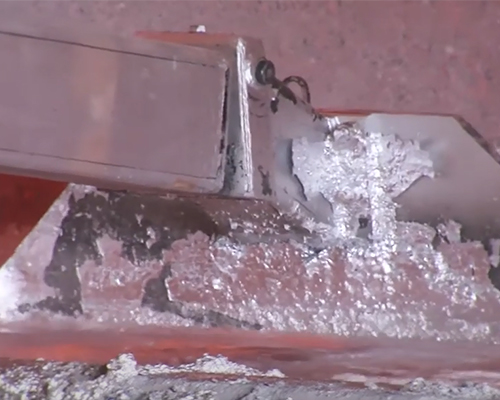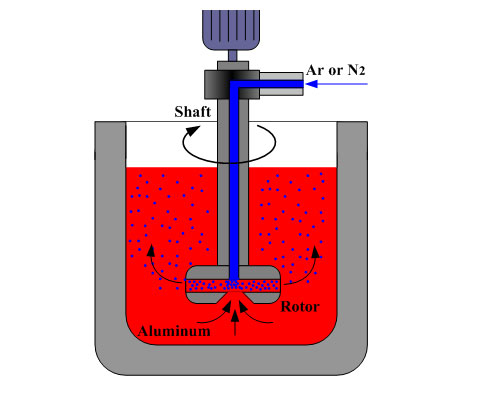Inert gas metal refining is a refining method in which inert gas is continuously blown into the aluminum melt, and oxidized impurities and hydrogen are brought out of the liquid surface during the floating process of the bubbles.
The reason for inert gas metal degassing is that there is no hydrogen in the inert gas blown into the melt, and its hydrogen partial pressure is zero, and the hydrogen partial pressure in the melt near the bubbles is much greater than zero. Therefore, there is a hydrogen partial pressure difference between the inside and outside of the bubble. Under the effect of this partial pressure difference, the hydrogen atoms in the melt diffuse to the bubble interface and recombine into the bubble at the interface. This degassing process will not stop until the partial pressure of hydrogen inside and outside the bubble equals.
The hydrogen entering the bubble escapes into the atmosphere as the bubble floats up. In addition, during the floating process of the bubbles, the macro-molecular hydrogen bubbles suspended in the melt and the gas in the inclusions can also be brought out of the liquid surface by flotation, thereby achieving the purpose of degassing.
The reason for inert gas metal refining is that the blown inert gas bubbles can absorb the oxidized inclusions in the melt and bring them out of the liquid surface during the floating process. This method is the so-called flotation slag removal method.

After the inert gas bubble adsorbs the oxidized inclusions in the melt, the total surface free energy of the system can be reduced. Therefore, this adsorption can happen automatically. The smaller the surface tension between the inert gas and the inclusions, and the greater the surface tension between the melt and the inert gas and the interface tension between the melt and the inclusions, the stronger the slag removal ability of this inert gas.
When using inert gas for refining, the covering flux should be evenly sprinkled on the liquid surface. This is because after the inert gas bubbles bring the inclusions out of the liquid surface, if there is a layer of flux on the liquid surface at this time, the inclusions will enter the flux and become slag, which is easy to pull out. Otherwise, the denser inclusions will fall into the molten aluminum again, and the less dense inclusions will form a scum on the liquid surface, which is difficult to separate from the molten aluminum. When these scums are pulled out, a lot of molten metal will be brought out, and increases the metal loss.

